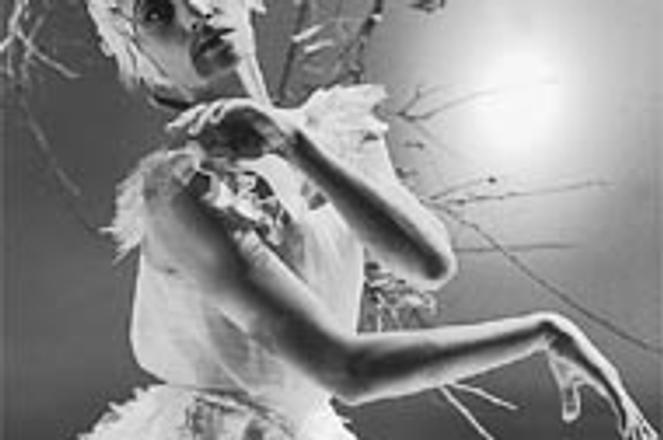Nora Gallovičová, six years the National Theater's leading ballerina, is now looking to the next stage in her career.Elena Hronská
For some people, ballet can be unnerving. Its blend of grace and asceticism evokes a mystique often difficult to comprehend. Whereas rock stars and actors are seemingly everywhere in the popular mainstream, ballet remains in a twilight world, where impressions are formed almost entirely by the stereotype: The wan, emaciated figure, rehearsing for hours on end, isolated from what the audience considers to be normal life.
By physique and regimen, Nora Gallovičová, the 31-year-old prima ballerina at the Slovak National Theater, fits the image. But she is also a wife and mother who commutes with the masses from her home in a less-than-dreamy neighborhood of pre-fabricated high rise apartments.
Starting on September 7, when the National Theater's season opens, audiences can see the performer who has danced all the major classical roles plus many modern interpretations to great acclaim on stages at home and abroad during her six years as the ensemble's leading woman.
Her career began long before she entered the ballet ensemble at the National Theater in 1985. She started dancing at 3, and at 10 she entered a special dance school, which she attended for eight years. Two years later, at 20, Gallovičová debuted on the professional stage as Desdemona in Othello, a performance she still regards as one of her best.
Since then, she has enthralled audiences around the world, with equal success in classical roles, such as Adam's "Giselle" (her favorite), and in more contemporary pieces, like Libor Vaculík's eclectic "La Dame aux Camelias."
In a profile made by Slovak Television last Christmas, Gallovičová displayed an entire repertoire of contemporary and modern sequences, seemingly effortlessly. The program was directed by Vaculík, her former dance partner, who is regarded by many as the finest Slovak dancer of his generation. Of Gallovičová, he once said, "When I am near her, I don't realize that I'm dancing. I'm just living on the stage." Darina Reguliová, personal assistant to the National Theater's director general, puts it more poetically: "Her hands are so expressive, like the leaves on a weeping willow tree, blowing gently in a breeze."
It is not uncommon for Gallovičová to stretch those hands, and the rest of her body, to their limit in the pursuit of excellence, rehearsing 14 hours a day at times. But it comes at a price. Before the premier of a ballet triptych last April, Gallovičová rehearsed with pain in her ankle, something she explained away as her commitment to being a ballet soloist.
Rather than using the National Theater's summer recess to relax, Gallovičová performed in the Wagner Festival in Bayreuth, Germany. There she worked with the Hungarian Ivan Marko, one of her favorite choreographers who three years ago created a short ballet for her, "Tristan and Isolde," which she performed in Japan and Budapest.
To some extent, Gallovičová reinforces the romantic melancholy stereotype of a prima ballerina. But she has another life. She is married to actor Ján Gallovič, and they have a six-year-old daughter, Alex. Gallovičová said she finds combining the roles of mother and international dancer "very difficult."
"Both my husband and I work in the theater, and it's not like a normal job," she said. "They are long, hard hours and afterwards I am very tired. But I make as much time as I can for my daughter. And my mother and babysitter also help."
Although the Danish great Margo Fonteyne and others danced well into their thirties, it is an age when the years of a punishing regimen begin to take their toll, and dancers must consider the next stage in their careers."I've been in the theater a long time now," Gallovičová said, "so my next period is important, to meet new teachers and choreographers, to learn as much as I possibly can." As if resigning herself to inevitably quitting the live stage, she added, "I would like to teach classical technique."
Gallovičová is aware of the unique challenges of teaching ballet, possibly the most inaccessible of the performing arts in a rarefied domain where, because of its daunting physical and artistic demands, many are called but few are chosen. Following a recent interview, Gallovičová turned and said, "You know what the most difficult thing of all is? Telling a mother that her daughter will never make the grade." Then she walked off to catch the bus home to Petržalka, and waved goodbye. The movement of her hand was, indeed, like the most delicate leaf in a breeze.
Author: Alan Jones


